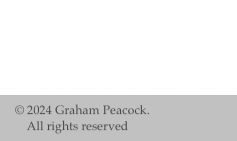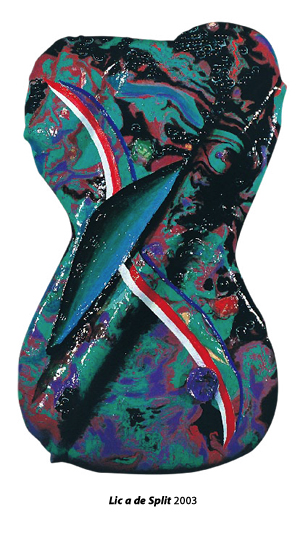|
The New New Illusionism Paintings
2000 - 2006
(irregular dimensional shaped acrylic canvases with
cut outs, glass, shading and modelling)
Click here or on the painting to visit this Gallery
Around the year 2000, I cut into a painting as way to remove an area and make a compositional change. A circular area was cut from the painting titled The Magician, and replaced with fresh canvas which was then shaded to appear as a three-dimensional ball. I found this act offered exciting new possibilities for expanding the compositional, and as it turned out, the illusionistic characteristics in my work. I studied classical life drawing at London University’s Goldsmiths College of Art and have taught these principles for the last 40 years, at the University of Alberta, so it was refreshing to find a place in my present work for possibilities once considered the antithesis in the pursuit for ‘flat’ non-representational painting. This way of working caused my reconsideration of the classically based roots first learned in my art school days. Illusionism has allowed my work to contain a higher degree of abstract symbolism, due to the increased figuration that shading brings about, and on which more traditional imagery is grounded. This shaded illusionism is new to flat abstraction, and runs counter to the prevailing tendencies in abstract painting since the 1950s. I see this as a new all-over figure/ ground painting, which I refer to as New New Illusionism.
In 1993 I visited the Städtishe Galerie, Stuttgart where I saw the Pollock painting 'Out of the Web'. Pollock had cut out shapes through the paint dribbled field and had in-filled the cuts outs with colour, an earth tone, on the board he had placed behind the canvas. The work made an enormous impression on me on how one could bring an ordered arrangement into seeming chaos. In 1998 I saw the Museum of Modern Art's Jackson Pollock Retrospective and again was struck by the same painting and also two small paintings with reversed shape cut out figures. The cut outs, in my work, have become mostly elliptical arabesque shapes chosen for their ease of integration. Once removed, these cut out pieces may be reattached elsewhere, either in the same work or in another work. The spaces left by the cut out pieces are filled with new canvas and painted, often with a shaded illusion.
This shaded dimensionality is in contrast to the flat, crazed patterning, the physical dimension suggested by the undulated surface, and the outer shape of the picture, all of which have become familiar additions to my work of that period.
The shading for my cut outs shapes was also inspired by the painted figures in the late work of Malevich and the illusions and drama of De Chirico. My arabesque shapes are also loosely referential to Matisse’s figure forms found in his drawings and paintings and in his late paper cut outs.
|
|
|





